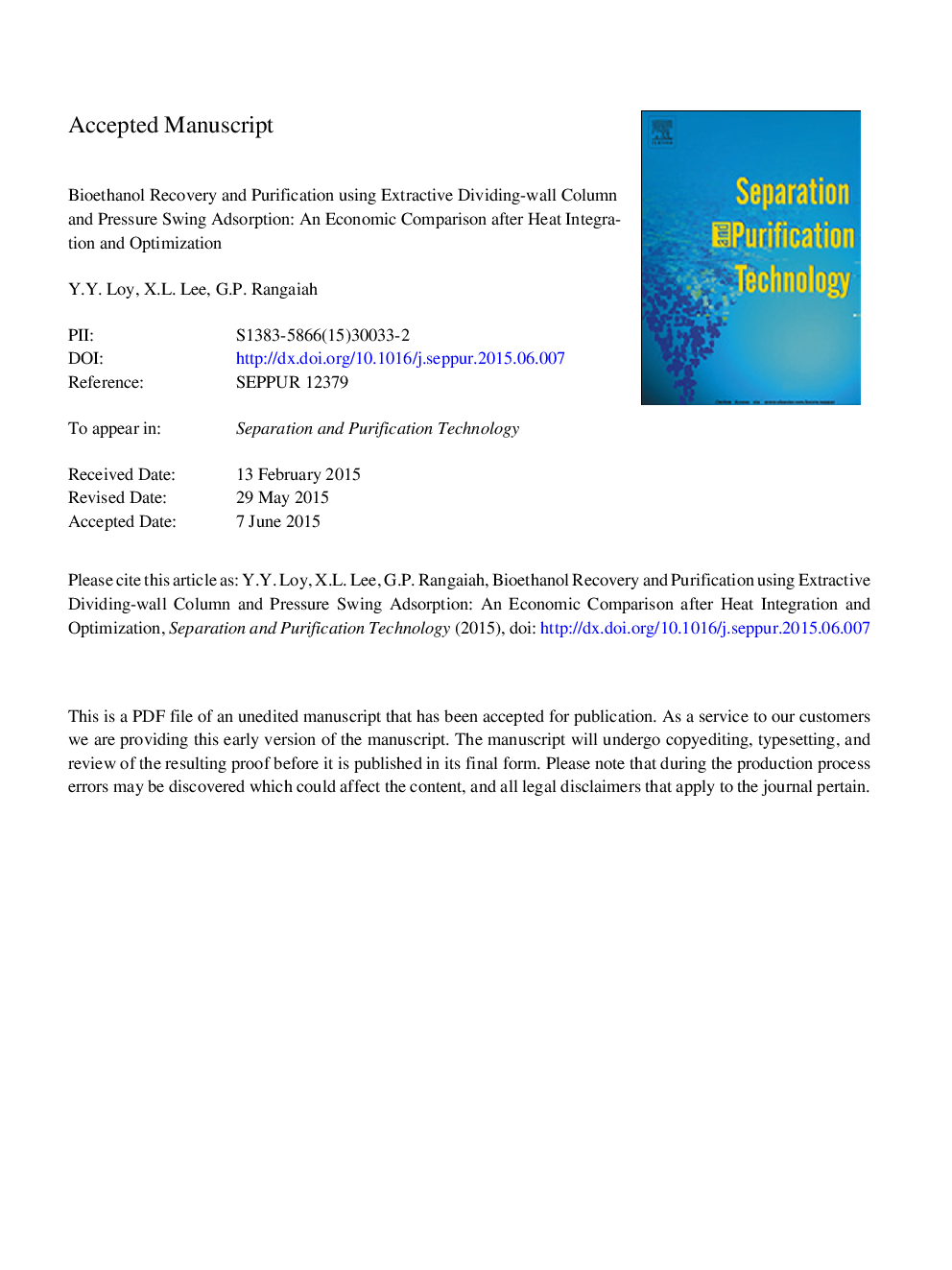| Article ID | Journal | Published Year | Pages | File Type |
|---|---|---|---|---|
| 640605 | Separation and Purification Technology | 2015 | 32 Pages |
Abstract
Extractive dividing-wall column (E-DWC) is a promising alternative to current bioethanol recovery and purification processes, garnering interest from the research community. In this study, E-DWC and pressure swing adsorption (PSA) processes for bioethanol recovery/purification are studied on a consistent basis, and an economic evaluation of both processes is made after heat integration and optimization. For this, realistic feed stream of 10Â wt% ethanol, 89.9Â wt% water and 0.1Â wt% carbon dioxide is considered, and both processes are simulated in Aspen HYSYS v8.2. PSA process involves distillation for removing most of water, before dehydration by PSA. Results indicate that, while E-DWC process has advantages over PSA process in terms of capital cost and thermal energy demand, PSA process still has 33% lower cost of manufacture per unit product than E-DWC process, mostly because of solvent loss. This shows that it is not sufficient to consider only energy requirement in assessing the feasibility of a promising technology; rather, an overall economic evaluation under realistic conditions should be performed. In addition, this work has investigated economies of scale and identified the optimal production capacity of PSA process for bioethanol recovery/purification.
Related Topics
Physical Sciences and Engineering
Chemical Engineering
Filtration and Separation
Authors
Y.Y. Loy, X.L. Lee, G.P. Rangaiah,
